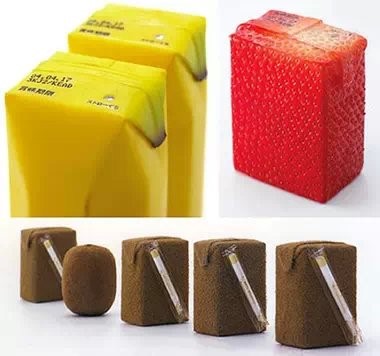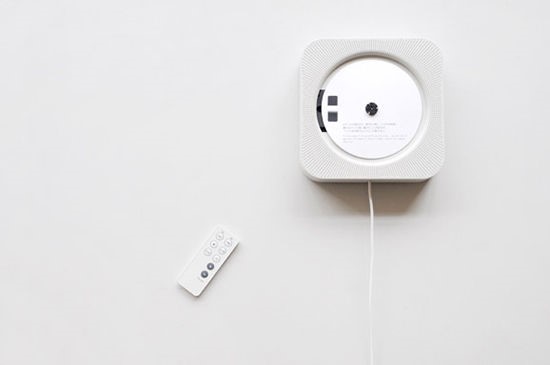The author of this article mainly introduces the availability of product design to you, enjoy~
1. Starting from the problem
Before introducing availability, we need to think about a question first, that is: how to design a door that only allows users to pull but not users to push ? There are many solutions to this problem. If you have a solution, please save it in your brain. After reading the entire article, think about the answer. I believe there must be unexpected results.

2. What is affordance?
According to the wiki’s explanation:
An affordance is a relation between an object or an environment and an organism that, through a collection of stimuli, affords the opportunity for that organism to perform an action. As a relation, an affordance exhibits the possibility of some action, and is not a property of either an organism or its environment alone.
Try to translate this text into Chinese:
Availability is a relationship between an object or environment and an organism. Through the collection of stimuli, it provides an opportunity for the organism to perform actions. As a relationship, affordability is the possibility of action, neither the environment nor the individual nature of the organism.
To give an example of life to understand this definition, what are the possibilities for a flat, hard and level ground? We will have multiple answers. for example:
- The availability of bipedal or quadrupedal animals for standing and running
- Availability for large animals to trample
- Availability for humans to build houses
- Availability of rocket landing
- Affordability for murder
- …………..
These answers are the relationship between the ground and the object, and the availability provided. Thus we can find that availability is a relationship, and the relationship determines that it is not only a single object, but multiple objects. Availability provides an opportunity, but it does not mean that such an opportunity will happen.
3. The Birth of Availability
American psychologist James Gibson innovatively proposed the theory of direct perception in his book “Perception of the Visual World” published in 1950. Traditional perception theory maintains that perception is a process of human construction. It is not directly caused by input stimuli, but is processed by the interaction of presented stimuli with assumptions, expectations, knowledge, motivation, emotions, etc., so it is called Indirect perception theory.
Gibson’s theory of direct perception believes that information is in the environment, and the perceiver does not need to process the information, but only needs to pick up the information directly from the environment. Information pickup requires a cognitive system instead of a feeling. This system can adjust direction, explore, investigate, adjust, optimize, resonate, extract and achieve balance. In the process of picking up information, there is a process of resonance. It is similar to a radio that can be tuned to receive sound. If the information in the human and the environment can be harmonized, it will pick up the information. Availability can be understood as the behavioral possibilities provided by people’s direct perception of things.
The difference between these two theories can be distinguished from different expressions. If it is indirect perception theory, it usually states this: If you want to report a bad thing to the boss, try to choose a sunny day when the boss is happy, because the surrounding environment and the boss’ mood at the time will affect the boss. Perception of bad events. And the common expression of direct perception theory: when a surface is level, flat, hard and wide, its height is within the range of the knee bend of a passing person who is tired and tired (under the condition of keeping the balance of the body). If it is consistent, when he sees this surface, he will resonate, thereby picking up the surface’s ability to sit and rest.
4. Inspiration from availability
(1) Naoto Fukasawa-“Unconscious Design”
Naoto Fukasawa believes: When people are unconsciously associated with objects and the environment, objects are in their most natural state. When people use an object, they will not realize its function or how people use it. Yes, in the unconscious state, people will adjust their bodies to recognize and adapt to the objects, so the design is not to create the shape but the relationship.
In the following two pictures, why do some people put this milk carton on the fence, and some people like to put their hands by the window when driving a big truck? Because the square of the fence fits the bottom of the milk carton, the height of the car window is just right for a person’s arm to place. That is to say, the fence provides the possibility to place the milk carton, and the car window provides the place for the person’s arm. Sex, some people resonate with it and produce this unconscious behavior.

Naoto Fukasawa has implemented this concept in many of his designs. For example: a beverage box with an outer packaging that matches the actual taste, a pull-string CD player similar to a fan (notes blow out like the wind).


(2) Product interaction design
Availability requires that the product knows how to use it at first glance. For example, a well-designed button should make it easier for people to know how to interact with it, such as how to press (position, strength, direction), what will happen after pressing it, etc., rather than want to press it. Secondly, products need to provide clear information, and more emphasis is placed on the organization, arrangement and presentation of information to make people resonate.
(3) Changes in world outlook
As a world view, availability theory has various subtle effects, such as improving the sensitivity of the senses, peacefully looking at the environment, and recognizing the value of ordinary, not being occupied by iconic, superficial, and symbolic things. Full of senses.
Sometimes you can even have a more humanistic perspective, such as a big rock on the side of the road. You don’t think it is nothing but a stone. You can recognize its ability to sit and rest, and you will find It has a rich story in its interaction with the human world.
5. Tail
Going back to the original question, how to design a door that only allows users to pull and not push . The common solution is to write a “pull”. If there are foreign friends, there will be a “pull” in English. However, if you encounter an illiterate who does not understand Chinese or English, this solution will not work. If according to the thinking of direct perception theory, this door should provide people with the possibility of “pull”, and what has the capability of “pull”, the answer can be a rope. Then a perfect answer to this question is to make a rope into a doorknob.

